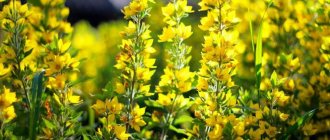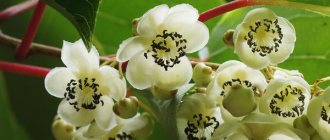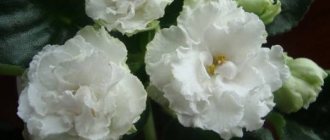Cinquefoil or Kuril tea is a universal shrub that will reward its owner not only with the joy of contemplating beauty, but also with the benefits that its leaves and stems bring. For almost five months every year, cinquefoil shrubs are covered with small, elegant flowers of white, yellow, orange, pink or red, depending on the variety.
Cinquefoil bush was brought from the Kuril Islands, for which it received the name Kuril tea. It is an excellent diuretic. Decoctions and teas from cinquefoil help with dysbacteriosis and normalize digestive processes in the body. Leaves and twigs of the bush can be brewed both dried and fresh.
Description of the plant and features
A compact, low (up to 1 meter in height) shrub, whose crown reaches about one and a half meters in diameter. Perennial, prone to abundant shoot formation , due to which the crown looks very voluminous.
Garden cinquefoil is valued for its long flowering period, which, with proper agricultural technology, begins at the end of May and lasts until the onset of cold weather. The flowers consist of five wide-open petals, whose velvety surface has been compared to expensive fabric.
In the center there are from 10 to 30 fluffy stamens, which gives the impression that the middle of the flower is covered with down. The color of the petals can be very diverse.
Gardeners value plants with white, pink, and yellow buds .
Potentilla received one of its names from the shape of the structure of the upper leaves. Young leaves have an elongated shape and are collected into a five-leaf clover.
Interesting! On the reverse side of the leaf blades, light silvery pubescence is clearly visible, which adds decorativeness to the bush.
The soil
The choice of soil must be approached quite scrupulously, since the plant is sensitive to soil reaction. Heavy clay soils are not suitable for it, as well as soils that are too moist, acidified, or with the risk of water stagnation. Even strongly calcareous ones will be preferable to slightly acidic ones. If the degree of fertility is insufficient, it is recommended to carry out regular feeding.
Varieties, photos and descriptions
About 500 varieties of cinquefoil are known to scientists. These are the most popular in gardening.
| Name | Description |
| Yellow (goldfinger) | A low bush up to 0.8 meters in height, its diameter can reach up to 170 cm. From the beginning of summer, the crown of the plant is densely covered with large yellow flowers, which continue to open until frost. |
| Pink (Pink Queen) | A beautiful bush up to 1 meter in height and the same in diameter. The color of the buds is soft pink. The autumn change in color of the leaf blades from green to golden adds decorative value to the shrub. |
| Red (red ace) | Frost-resistant and tall bush - up to 170 cm in height. It has a relatively small crown size - about 1 m in diameter. An interesting feature of the plant is the change in color of the buds: in summer they are red-orange, and closer to autumn they acquire a distinct yellow note. |
| Daydown | It is distinguished by the compact size of the bush - about 0.7 m in height, while the diameter of the crown can be twice this figure. The flowering is long-lasting and very spectacular; from the beginning of summer the bush is densely dotted with rusty-red buds. |
| Hybrid | This variety was obtained by crossing several hybrids. It is distinguished by its slow growth rate, large yellow flowers and attractive silver-green color of leaf blades. |
| Large-flowered | It differs from other varieties in the large size of its open flowers - they can reach almost 5 cm in diameter. But the size of the bush is very modest, it does not exceed 30 cm. |
| Abbotswood | The bush grows about a meter in height, and the diameter of the crown slightly exceeds this value. The plant looks incredibly attractive during the flowering period, as it is densely strewn with snow-white corollas about 30 mm when opened. The variety tolerates short-term droughts well and can tolerate light partial shade, but still belongs to the light-loving varieties. |
| Merion red robin | A beautiful, slightly elongated bush up to half a meter high and up to 0.8 m wide. The color of the buds is red or red-orange. |
| Lovely pink | Doesn't stand out too much for its size. Much more attractive is the two-color color of the buds: deep pink at the edges and golden yellow in the center of the flower. |
| White (Potentilla Alba) | Grown as an ornamental shrub. From the end of spring until the beginning of autumn frosts, the bush is densely strewn with small white flowers. |
| Goose (Potentilla anserina) | It is a creeping herbaceous perennial, characterized by its ability to root long (up to 0.7 meters) shoots. |
| Cuff | The height of this wild-growing herbaceous perennial is about 30 cm. The plant received its name due to its small white flowers, shaped like falling cuffs. |
| Silver | Spreading perennial subshrub up to half a meter high. It is characterized by high frost resistance. The plant received its name for the silvery tint on the yellow-colored flower petals. |
| Sharp-toothed | The homeland of the plant is North America. The size of the bush is quite large and is about 0.75 meters in height. The color of the small flowers is very beautiful, creamy white. |
| Golden | A low-growing herbaceous perennial with a bush height of up to 0.25 m. Small golden-yellow flowers have a more intense color at the base of the petals. |
| Leafy | The plant is small and herbaceous. The color of small flowers is white and pink. |
| Kluza | Widely distributed in Europe. It is distinguished by its small size - the height of the herbaceous bush is no more than 15 cm. The flowers are small, up to 2.5 cm in diameter, painted white. |
| Alpine | The name is given according to the region of distribution - it is on the slopes of the Alps that you can find low bushes of this cinquefoil. The small flowers are rich yellow with a darker center. |
| Erect | An erect bush up to half a meter tall. Remarkable for the bright yellow color of the petals with a darker center. The flowers are small, their diameter does not exceed 1 cm. |
| Woolly | A low-growing creeping herbaceous plant, it has the ability to weave the soil, forming a dense carpet. It is notable for its abundant flowering and large size of golden-yellow flower cups - their diameter reaches 4 cm. |
| Shrub | A large erect shrub up to one and a half meters tall with delicate pale pink or white-pink corollas. |
| Nepalese | At a height of about 0.6 m, it produces rigid erect peduncles topped with red-crimson flower cups up to 2.5 cm in diameter. |
| Brilliant | It forms small clumps up to 20 cm in diameter, while the height of the bush is no more than 10 cm. It is notable for its variety of shades: the corollas can be of any color from soft pink to white. |
| Norwegian | The low bush, up to half a meter in height, is highly frost-resistant and easily tolerates frosts down to -40 °C. It has very small bright yellow flowers. |
| Bolotnaya | The height of the perennial herbaceous bush is about 45 cm. The diameter of the open flowers is about 3.5 cm. The petals are painted in reddish-brown tones. The plant is very frost-resistant. |
Fertilizer
Since it is very important for the plant that the soil is as fertile as possible, the level of nutrients must be maintained with fertilizers. The optimal amount of fertilizing is 2-3 times per season, starting next year from the moment of planting. The better the feeding, the more magnificent and longer the flowering will be, as well as the degree of winter hardiness. The first time, fertilizers (mineral) are applied in early spring, at a rate of 120-150 g with the usual rate of 60-70 g. The second time, they focus on potassium-phosphorus mixtures, but in the dosage specified by the manufacturer on the packaging.
Related article:
Barberry Thunberg Admiration
Planting in open ground
Cinquefoil is often used in the garden as a ground cover plant, which does not leave weeds a single chance to get through to the light. It is not difficult to grow, and care will not cause difficulties even for a novice gardener .
Landing dates
Cinquefoil seedlings are planted at any time from mid-spring to mid-autumn . The main requirement: the soil must warm up sufficiently so that the cinquefoil root does not get damaged.
Planting in autumn differs from spring planting only in the amount of water applied under the bush. Since moisture evaporates much more slowly in cool weather, freshly planted plants are watered with less water in the fall.
Choosing a landing site
When choosing a place for planting, you need to be guided by the amount of sunlight falling on the site .
Cinquefoil is a light-loving crop and you can expect abundant flowering from it only in good light. It is permissible to plant a bush in light partial shade, but you should not plant the plant in a shaded area - in this case, flowering may not occur at all.
Cinquefoil is generally tolerant of soil composition. The bush grows poorly only on heavy clay soils. Otherwise, it can be grown even on depleted soil .
Planting step by step
Before planting, the cinquefoil seedling needs to be soaked for a couple of hours in a solution of a drug that stimulates root formation . This will allow the cinquefoil to absorb moisture and speed up the plant’s adaptation to its new location. During this time, a pit is prepared for planting.
The hole dimensions are:
- 40 cm deep;
- 30 cm long;
- 30 cm wide.
A drainage layer must be placed at the bottom of the hole so that moisture does not come into contact with the roots for too long.
A layer of fertile soil is poured on top, the cinquefoil is planted and the hole is filled with fertile soil. The earth is compacted, the plantings are watered and only after that the soil around the seedling is mulched.
Methods of propagation of cinquefoil
Shrub reproduction is carried out in three ways:
- seeds;
- cuttings,
- dividing the bush.
Propagation by sowing seeds
This method requires the most patience. The collected cinquefoil seeds are sown in pots with substrate. The base should always be evenly moist and excess moisture should be avoided.
Potentilla seedlings are quite sensitive to cold, so grow seedlings at home and transplant them into the garden next spring.
How to propagate cinquefoil from cuttings?
New seedlings can be obtained at home. Propagation of shrubby cinquefoil is easy and almost always ends successfully. The shrub reproduces by seedlings made from shoots in the summer. Reproduction is carried out by cuttings. Pieces 8-10 cm long with a heel (a small part of 2-year-old wood) are cut from the side shoots. Then the cuttings are planted in a mixture of peat and sand in a 1:1 ratio. Cuttings should be additionally treated with a special composition that stimulates rooting.
It happens that buds on cinquefoil cuttings begin to germinate before roots have formed. To prevent this from happening, they need to be stored in the shade, the room ventilated, and the temperature slowly lowered in winter. Cuttings overwinter at 5-10 ° C.
In spring, seedlings are transplanted under film, regularly watered and grown throughout the year. In autumn, cinquefoil plants are planted in a permanent place in open ground.
Vigorous varieties can be propagated by cuttings taken in winter. Such seedlings are stored in a cold room - a barn, a garage.
It is important that the cuttings do not dry out; it is better to store them buried in the soil.
After one growing season, the cuttings are suitable for permanent replanting.
Propagation by dividing the bush
The fastest way is to divide the bush. The root ball is carefully dug in from all sides and removed from the soil. The plant with roots is vertically divided into parts with a knife and planted separately. It is important that each part of the seedling has its own roots.
It is worth noting that cinquefoil does not like transplanting.
Care and cultivation
Caring for cinquefoil will not cause any difficulties, since the plant is unpretentious and hardy .
What goes with it?
You can plant cinquefoil next to other perennial ornamental plants - it goes well with any and does not conflict with them.
Potentilla looks great against the background of ornamental shrubs, shading them and becoming a transitional link from low-growing flowers to taller shrubs.
Read about colors that can be combined with cinquefoil:
Wonderful ranunculus or garden buttercup
Primula Akaulis: early and late varieties of spring primrose
Rudbeckia perennial - exotic chamomile in your garden
Watering and fertilizing
Water the cinquefoil very moderately and only during periods of prolonged drought; the bush also requires watering immediately after planting. The rest of the time, the bush has enough natural moisture that enters the soil along with precipitation .
Important! Potentilla can respond to an excess of minerals and nutrients by dropping buds that are ready to open and appearing sickly.
Fertilize the five-leaf plant three years after planting and do not apply more than 3 fertilizings in the spring . The rest of the time, no fertilizing is applied.
Features of care during the flowering period
Potentilla does not require specific care during the flowering period. It is enough to regularly remove faded buds to maintain the decorative appearance of the bush at the proper level.
Care after flowering
After the cinquefoil has bloomed, they begin to prepare it for winter . The shoots are shortened by 1/3 of the total length. The soil around is dug up and mulched with fresh humus. For prevention, the bush can be treated with Bordeaux mixture.
Wintering
It is necessary to organize wintering only for freshly planted seedlings and newly rooted cuttings . They are covered with spruce branches or straw.
Adult cinquefoils do not need shelter because they tolerate sub-zero temperatures well.
Useful properties of Cinquefoil
Cinquefoil is not only an ornamental plant, but also a medicinal plant. Potentilla leaves and flowers contain more vitamin C than lemon. The complex of beneficial substances includes carotene, tannin, organic acids, flavonoids, and essential oils. An infusion of leaves and flowers (Kuril tea) helps get rid of many diseases. It has long been successfully used for gargling and mouthwash, treating wounds and burns, normalizing metabolism and intestinal motility, treating dysbiosis and intestinal infections. Kuril tea has a calming effect during stressful conditions.
Medicinal raw materials (leaves and flowers of cinquefoil) are harvested at the end of July - August, cutting off the one-year flowering tops and drying them in the shade. Brew at the rate of 1 tablespoon of crushed leaves and flowers per 250 ml of boiling water, then add honey and leave for half an hour.
Catalog Potentillas
Trimming
Regular pruning helps give the cinquefoil crown the correct shape , prevent it from thickening and maintain abundant flowering.
Why trim
Potentilla shoots tend to become woody with age. They are too overloaded with weak, thin branches: this prevents the formation of new buds, and accordingly, the number of flowers decreases.
First trim
The first pruning is carried out immediately after planting . During this pruning, all damaged and weak branches are removed. Then reduce the length of the remaining shoots by a third. This stimulates the development of new flower buds.
Sanitary pruning
This pruning is carried out in the spring ; it consists of thinning the crown, removing damaged, dry shoots and branches with signs of disease development.
Stimulating
To stimulate abundant flowering, in the spring, cinquefoil shoots are shortened by a third of their total length .
Rejuvenating
Mature bushes with woody shoots need to be pruned regularly to allow new growth to grow. To do this, thick shoots are removed close to the ground or the crown is completely cut off at a level of 10 cm above the ground.
Lighting
Regardless of the variety, cinquefoil prefers to grow in sunny, warm areas. The light-loving plant can adapt to partial shade, but in this case you should not count on its abundant flowering. Neighborhood next to other shrubs and garden trees is acceptable, including light shading from the crown, which saves from the scorching heat, but the cinquefoil should still be in the sun for most of the daylight hours. The attitude towards drafts is neutral, as well as the level of air pollution.
Selection of seedlings
A bush cinquefoil seedling can be purchased at a nursery. High-quality planting material has:
- several flexible shoots with living but unopened buds;
- compact crown;
- roots at least 15-20 cm long (they should not be dry, very short, or broken);
- with a closed root system, the lump of earth should have a diameter of at least 30 cm.
Double flowers
Hybrid double and semi-double varieties bloom brightly, like Nepalese cinquefoil:
- Vulcan - opens large buds, red petals surround a yellow core;
- Emily is a plant with large flowers of a rich red hue. The petals are edged with a golden-yellow edge. The serrated leaves are shaped like strawberries;
- Ark-en-Sil is a low-growing strawberry-like hybrid that stands out for its dark red flowers with a crimson tint. The edges of the petals are decorated with a yellow border;
- Snowbird is a frost-tolerant shrub with light green leaves in June covered with white flowers with a yellow tint in the center. The variety blooms until the first frost.
Trimmed shrubs with double flowers from a distance resemble a rose bush.
Ivory flowers
The shades of white varieties are close to the noble color:
- Abbotswood - a meter-high shrub is often planted on an alpine hill. Its flowers are gathered in clusters;
- Vichi is a tall shrub reaching 150 centimeters in length and width. A distinctive feature is the small red stamens;
- McCay's White is a bush variety with a creamy undertone to the petals. The stamens are distinguished by bright yellow dots;
- Menkhi - distinguished by green leaves with silver edges;
- Farrers White is an elegant flowering shrub.
Breeders have not yet been able to obtain pure ivory color. Similar tones are also found among cream-colored cinquefoil species.
Orange varieties
The following types of cinquefoil are used to decorate borders and flower beds:
- Tangerine - the petals of a compact shrub change color. Copper tone appears in the shade and twilight, and yellow - at midday, in bright sun. The buds open in July;
- Mango Tango - orange-red petals with a yellow gradient in the center. The bush gives small growth and is distinguished by bright flowering;
- Hoplis Orange - petals retain their bright color when exposed to sunlight. The leaves shine thanks to silvery fibers. The variety blooms during the three summer months and until October.
The plants differ in the shades of their petals, but retain their natural ability to bloom for a long time.
Preparing for the winter
It has excellent winter hardiness and the ability to adapt to any climatic conditions. The culture grows equally well in both southern and northern regions, including areas close to the Arctic Circle. This “immunity” to cold is explained by the fact that by the beginning of frost, all the shoots have time to ripen, and the plant stops its development. It is characteristic that every year the level of winter hardiness only increases.
It should be noted that varieties imported from other regions and countries may undergo an adaptive period much worse than plants oriented to a specific area. That is why you should always be interested in cold resistance parameters when purchasing. If this is not possible, then just in case, the plant is covered with mulch in the first winter. The height of the shelter should be within 10 cm. Additionally, the bushes are hilled in a circle near the trunk. It is believed that varieties with white and yellow flowers are more hardy, and pink, orange and red varieties have such qualities to a lesser extent.
Related article:
Beautiful flowering shrubs for the garden











